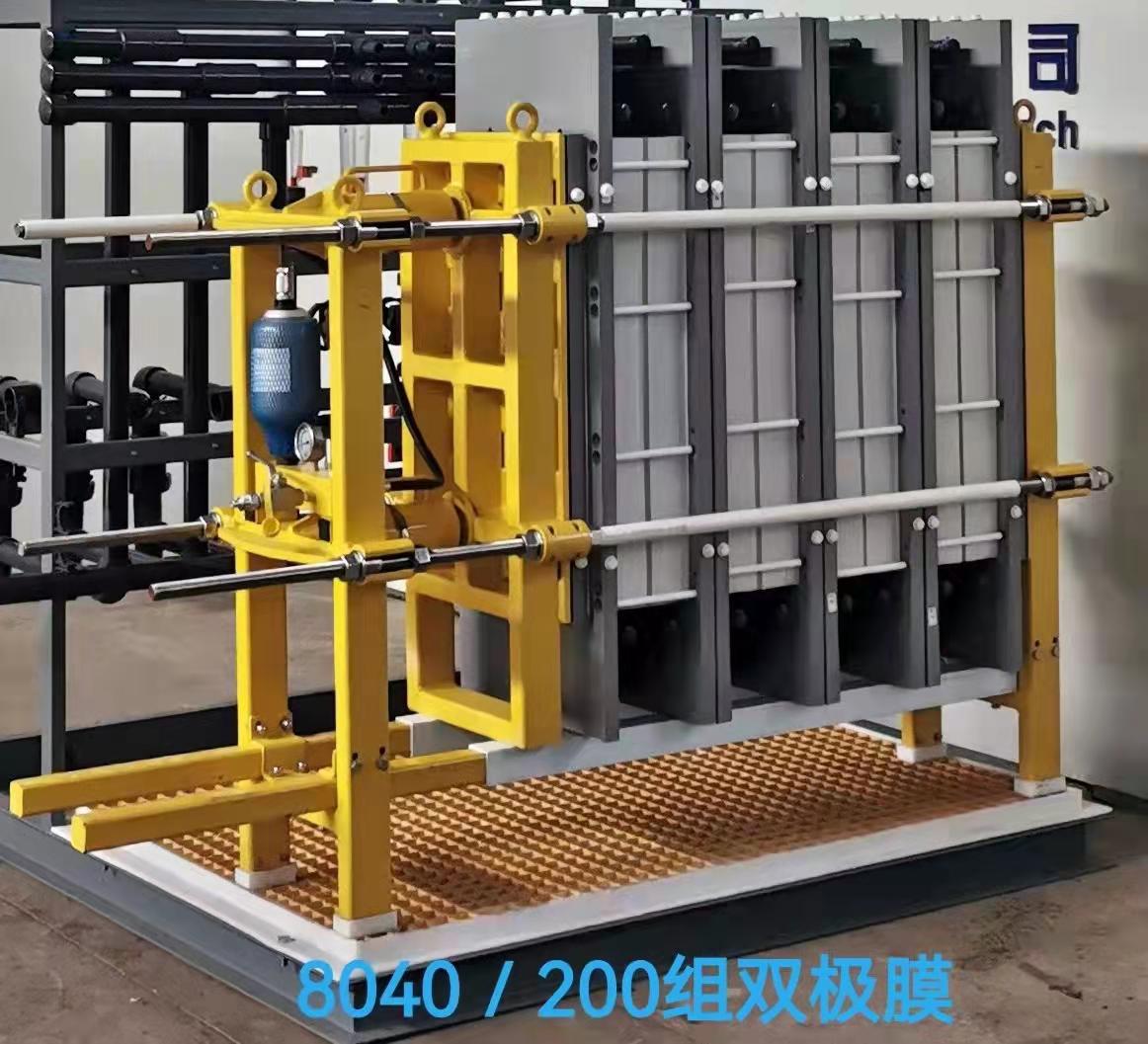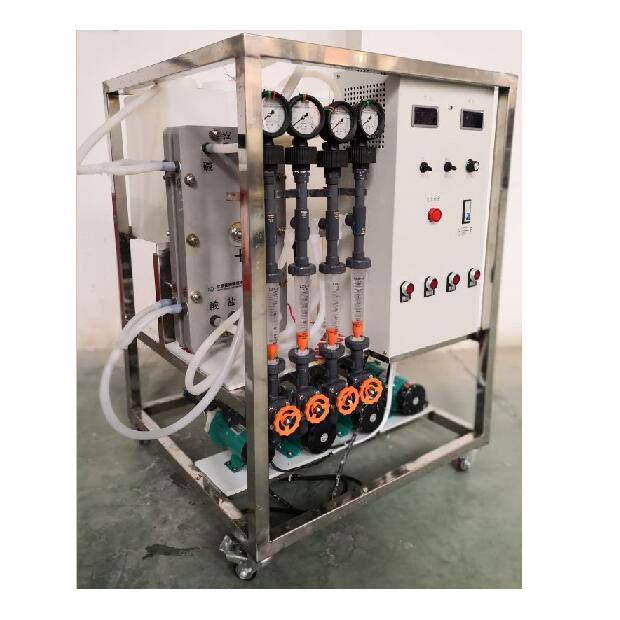
The bipolar ion exchange membrane electrodialysis is an electrodialysis formed by combining bipolar membranes and unipolar membranes in different ways. Bipolar membrane electrodialysis combines the dissociation of salts of ordinary electrodialysis with the dissociation of H2O molecules in bipolar membranes. In this way, the corresponding salt ions in the solution combine with the hydrogen ions and hydroxide ions generated by the hydrolysis of the bipolar membrane to convert into corresponding acids and bases. Bipolar membrane dissociation water has no gas or by-products, which will reduce the voltage and maximize the use of energy. In the same bipolar membrane electrodialysis membrane stack, inorganic and organic salts can be converted into corresponding acids and alkalis. Bipolar membrane electrodialysis is mainly used for the regeneration and reuse of acid and alkali in salt preparation; clean production of organic acids and alkalis.
Characteristics of Bipolar Electrodialyzer BPED
- Energy saving and environmental protection, a new generation of acid-base technology;
- splitting water into H+ and OH- at low voltage;
- The acid and alkali are formed from inorganic salts and organic acid salts in a single process, and the process is simple and clean;
- The concentration of acid and alkali produced is controllable and adjustable;
- no redox reaction occurs except for the electrodes at both ends, and no by-products are produced;
- Each chamber does not require electrodes, and the amount of gas generated is small. The investment cost and operating cost account for only 40 to 50% of the electrolysis method.
Type:
1, Testing machine SYABCM4020-10 for lab
2, Pilot machine SYABCM8040-50 for the treatment capacity of 7.5kg NacL/hour

3, Production machine SYABCM8040-100 for the treatment capacity of 15kg NacL/hour

4, Production machine SYABCM8040-200 for the treatment capacity of 30kg NacL/hour

5, Large production machine SYABCM12060-200
Applications Area:
1, Preparation of acid and bases from inorganic salts (such as sodium sulfate, sodium chloride, lithium chloride, etc.)2, Production of organic acids (such as gluconic acid, lactic acid, malic acid, succinic acid, etc.)
3, Production of organic bases (such as ornithine, lysine, arginine, histidine, etc.)
Inlet water requirement of Bipolar ion exchange membrane electrodialysis:
1) water temperature : 5-40 degrees Celsius2) oxygen consumption: < 20mg/L , It cannot contain aromatic hydrocarbons
3) SS: < 1mg/L
4) Fe: < 0.3mg/L
5) Mn: < 0.1mg/L
6) SDI: < 3
7) Mg, Ca < 1mg/L
8) turbidity < 1NTU
9) SiO2 < 1mg/L
Performance Introduction of SYABCM8040-200
200 pieces of bipolar ion exchange membrane,anion-exchange membrane and cation-exchange membrane for each.
The effective area of each membrane is 50 m2.
Current Density: 500A/m2
Under standard operating conditions, the conversion efficiency of the membrane stack is as follows(Other salts can be calculated according to the corresponding equivalent molar mass):
Name |
Reaction Formula |
Processing Capacity |
Power Consumption |
NaCl |
H2O+NaCl→HCl+NaOH |
30 |
1.5 |
Na2So4 |
Na2SO4+H2O→H2SO4+NaOH |
36.4 |
1.2 |
LiCl |
LiCl+H2O→LiOH+HCl |
21.8 |
2.1 |
Li2SO4 |
Li2SO4+H2O→H2SO4+LiOH |
28.2 |
1.6 |
NaNO3 |
NaNO3+H2O→HNO3+NaOH |
43.6 |
1.1 |